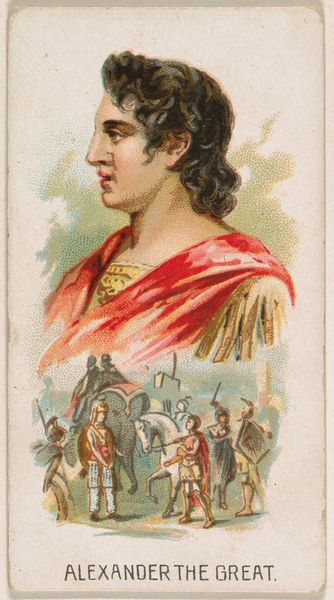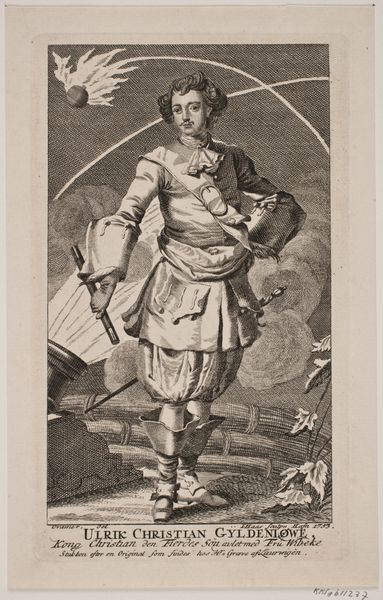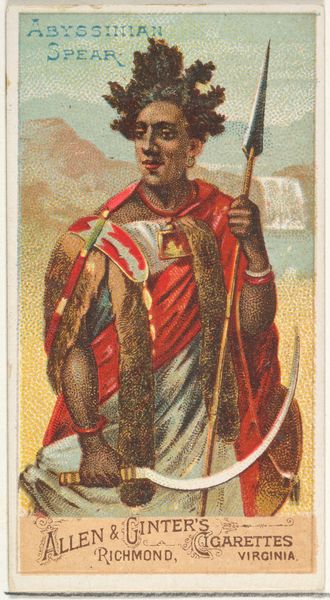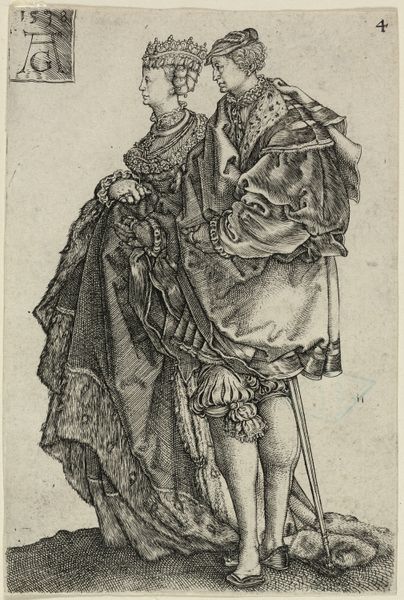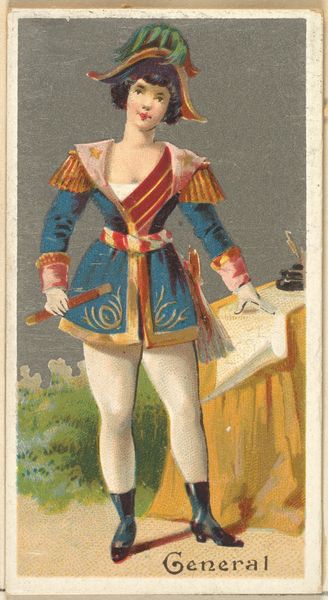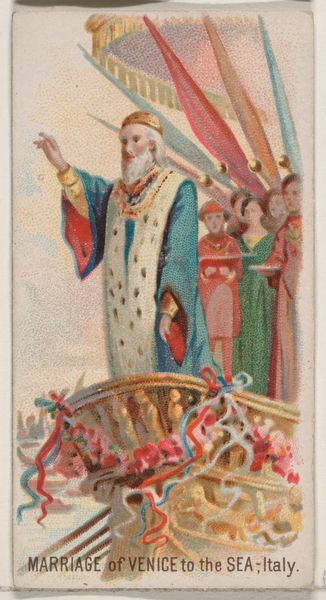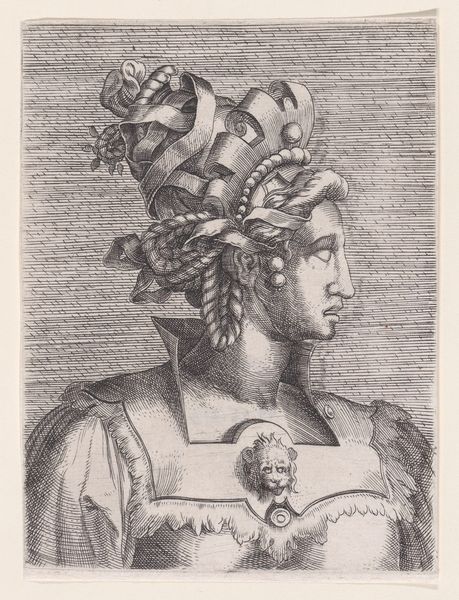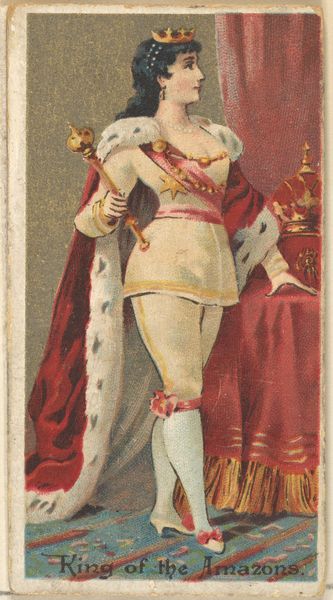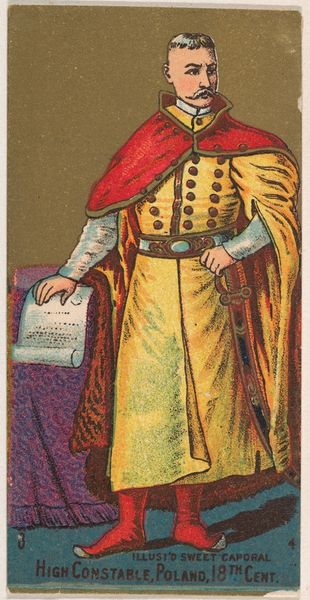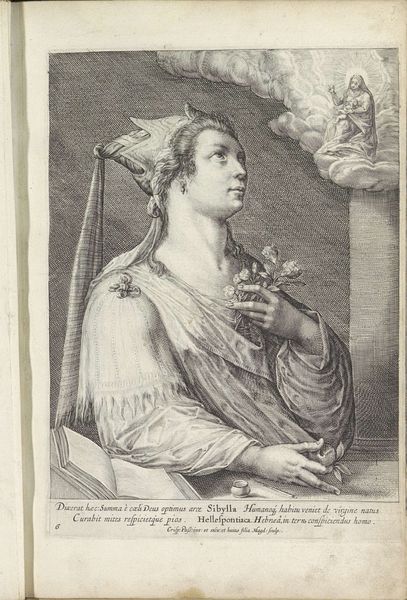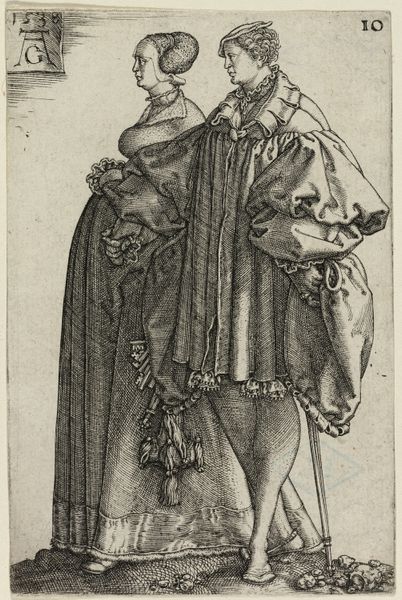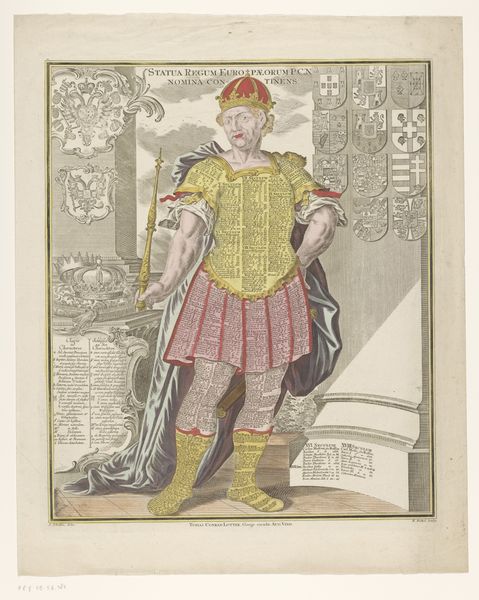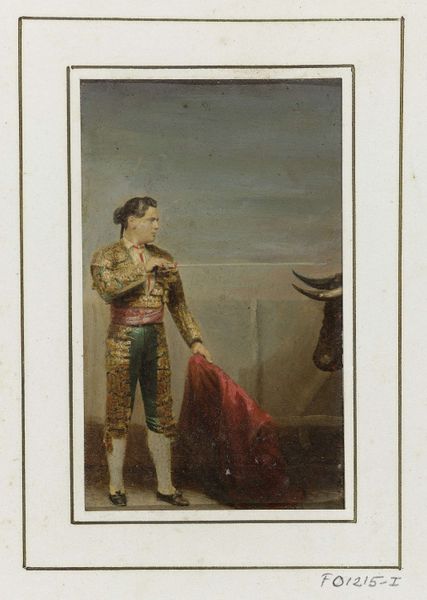
Julius Caesar, from Leaders series (N222) issued by Kinney Bros. 1888
0:00
0:00
drawing, coloured-pencil, print
#
portrait
#
drawing
#
coloured-pencil
# print
#
figuration
#
coloured pencil
#
ancient-mediterranean
#
history-painting
#
profile
Dimensions: Sheet: 2 3/4 × 1 7/16 in. (7 × 3.7 cm)
Copyright: Public Domain
Curator: This is "Julius Caesar," part of the Leaders series (N222) issued by Kinney Bros. in 1888. These were printed as trade cards by the Kinney Brothers Tobacco Company. Editor: My first impression is that it is trying to be majestic, with the laurel wreath, but the colours and materials give it a very… commercial, mass-produced feel. It almost looks like something you would find on a pack of sweets, not fine art. Curator: That’s right. Trade cards served primarily as advertising. Circulated with consumer products, these images reached a broad public, disseminating ideas about historical figures in conjunction with commerce. Note how Caesar is styled. Editor: The color palette feels somewhat subdued; like it was quickly produced with readily available, inexpensive colored pencils and printing methods of the time, not so interested in capturing an accurate likeness, and more interested in distributing widely. It reduces a historical figure to an image to sell tobacco. Curator: Exactly, we need to consider the role that printmaking had in constructing national and cultural identity during the 19th century. What do you think is communicated about leadership through this image? Editor: Well, we have Caesar in profile, which automatically recalls classical portraiture and authority. However, by pairing the figure with an easily accessible tobacco product, his importance seems somehow… diminished. Curator: Yet the profile view also historicizes the man and positions him for audiences as part of a recognizable past, associating that history, and by extension power, with the company. Editor: That small vignette at the bottom feels significant too; is that the assassination? The material limitations and the methods employed for such small reproductions give it an almost abstract aesthetic today, however this work also challenges what we consider ‘high art’ versus simple advertisement. Curator: Definitely. Even its existence within the Met’s collection blurs these assumed boundaries. Ultimately, this simple, unassuming card shows the complex relationship between commercial interests and cultural values in late 19th-century America. Editor: Right. Examining how material production intertwined with cultural narratives, we start to notice how mass consumption shapes and frames even the figures we consider immortal.
Comments
No comments
Be the first to comment and join the conversation on the ultimate creative platform.
